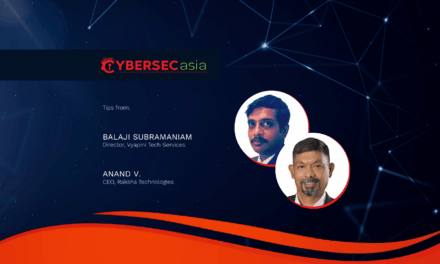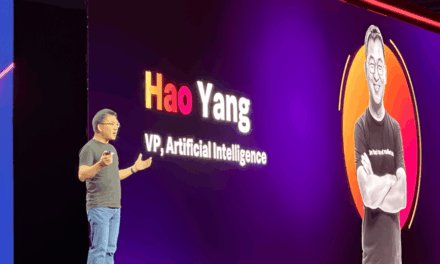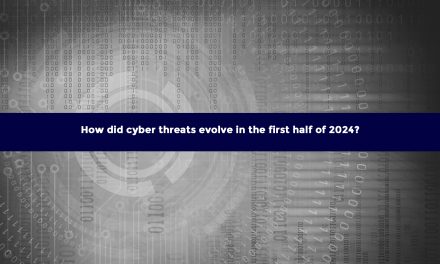Organizations investing in Zero Trust may struggle to unify controls, risking exposure to AI-driven attacks, supply chain breaches, and compliance pressures.
The commoditization of ransomware has made cybercrimes more prevalent, with attackers and Ransomware-as-a-Service available for only a few hundred dollars on the Dark Web.
As technology continues to advance at breakneck speed, so are the cyber threats that accompany it. From AI-powered attacks to supply chain vulnerabilities and the looming implications of quantum computing, the security risk landscape in 2025 is more volatile and complex than ever.
This complexity also means cyber resilience can no longer be the domain of IT departments alone: it is a strategic imperative that spans the entire C-suite.
Modern problems require modern solutions
Remote-working and Cloud adoption have expanded the attack surface for insider threats, making them harder to detect. From bot-driven credential stuffing to AI-orchestrated DDoS attacks, malicious actors are scaling their operations to automate attacks, evade detection and exploit vulnerabilities faster than organizations can respond.
AI-driven threats require AI-powered defenses. As generative AI (GenAI) becomes embedded in workflows, organizations will need to integrate AI-enhanced threat detection, automated defenses, and strong credential hygiene to ensure they are facing the enemy head-on.
With the integration of AI in the overall security posture, organizations can then drive more comprehensive security observability, and leverage AI-powered detection to analyze vast datasets, identify anomalies, and neutralize emerging threats in real time. Also, there are countless other headwinds that organizations need to navigate in today’s security landscape:
- For instance, employees are adopting GenAI tools faster than security teams can keep up, creating “Shadow AI” blind spots that bypass traditional governance and compliance.
- Furthermore, geopolitical tensions are spilling into cyberspace, with organizations underestimating these cyber threats, assuming neutrality while state-sponsored attacks disrupt industries and expose critical supply chain vulnerabilities.
- Meanwhile, the uneven adoption of post-quantum cryptography suggests a troubling lag in enterprise readiness. With quantum computing poised to break traditional encryption, leaders need to accelerate adoption to protect long-term data and meet evolving regulatory expectations.
- Supply chains remain the weakest links. A single compromised vendor can be an open door for attackers.
Amid all of these emerging risks, Zero Trust is not optional anymore: it is a necessity to seal these gaps.
Maximizing Zero Trust benefits
In a world of session hijacking, phishing-resistant threats and authentication-bypass techniques, static passwords and basic multi-factor authentication no longer cut it. Enterprises need to evolve towards full Zero Trust architectures, including passwordless authentication and continuous, risk-based access controls.
While an increasing majority of organizations in our user ecosystem have already invested (or plan to do so) in Zero Trust, crucial execution gap remains: lack of full deployment. Organizations will need to evolve their Zero Trust strategy from isolated controls to a single, unified layer spanning their entire enterprise. The focus will shift from secure, remote access management alone to unifying identity, data, and traffic policies across every environment.
Thankfully, many leaders are already moving towards platforms that prioritize:
- Built-in robustness and resilience without requiring retroactive fixes, ensuring operational continuity
- Global scalability for operating seamlessly across diverse regions, supporting consistent performance and security worldwide
- Automated threat detection and response to identify threats and execute responses efficiently, minimizing manual intervention
- Real-time visibility to provide ongoing insights into system performance and potential risks, enabling proactive management
That is where the real value is: not just reducing risk, but enabling agility. Embedding Zero Trust into their digital foundation makes how they build, scale, and innovate, inherently secure.
Security-by-design matters
Finally, compliance can no longer be reactive. Regulatory frameworks across the region are expanding rapidly to ensure frameworks are in place to prevent and manage cybersecurity threats. From Vietnam’s Digital Technology Industry Law, to Indonesia’s Personal Data Protection (PDP) legislation, to Singapore’s Model AI Governance Framework — we are entering a new era of cybersecurity, defined by stricter requirements, heightened scrutiny, and broader accountability.
However, this does not mean organizations should treat cybersecurity as just an exercise in avoiding legal penalties: the whole paradigm has wider implications on protecting trust, reputation, and long-term resilience in an environment where the cost of inaction is rising.
In an era of AI-charged attacks, rising regulatory demands and complex digital interdependencies, cybersecurity can no longer be siloed, reactive, or an afterthought. Security cannot wait, and neither can businesses. Beyond reacting to threats, organizations should embed resilience into how they operate, innovate, and grow: in the AI age, cybersecurity is not optional, it is foundational.

















